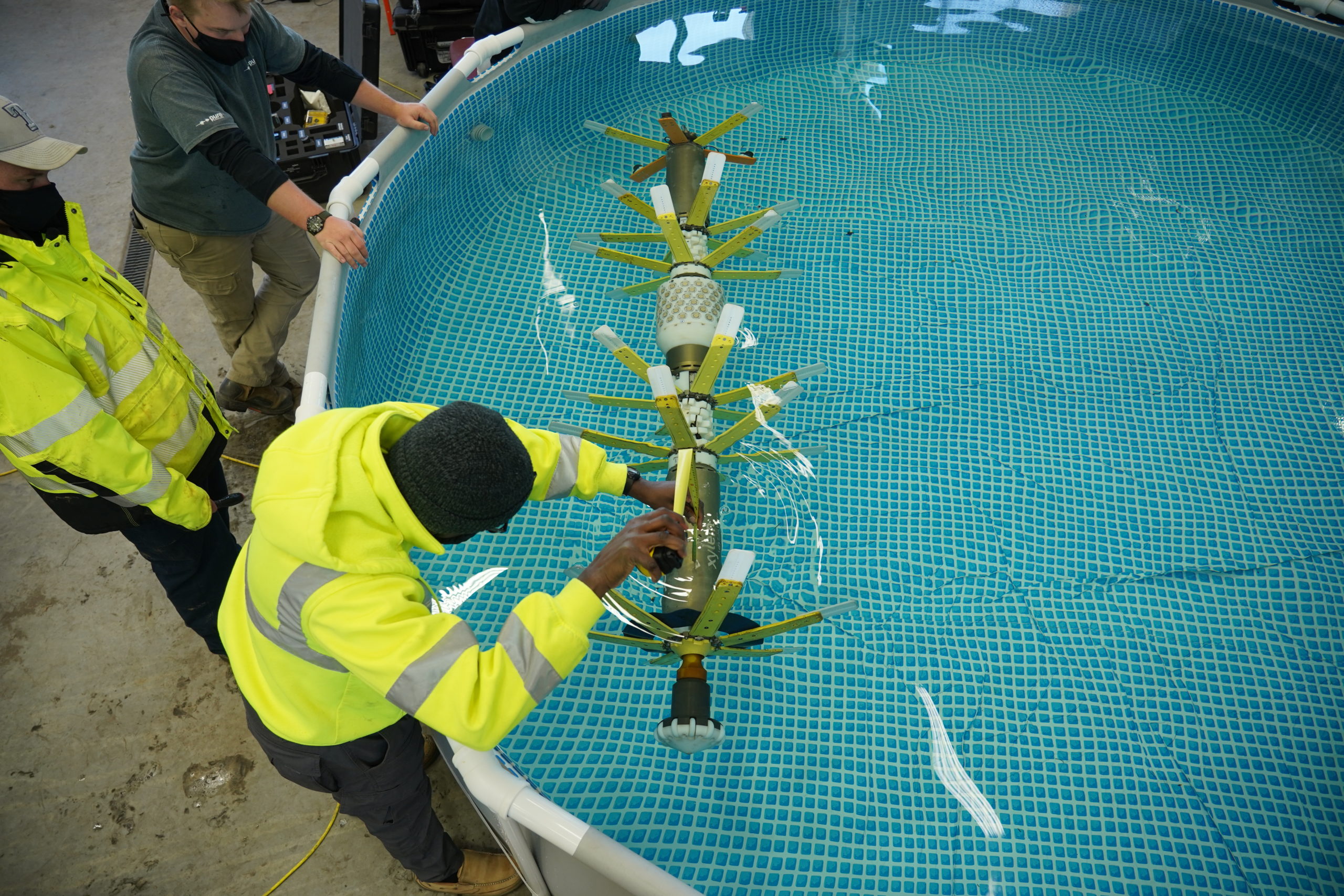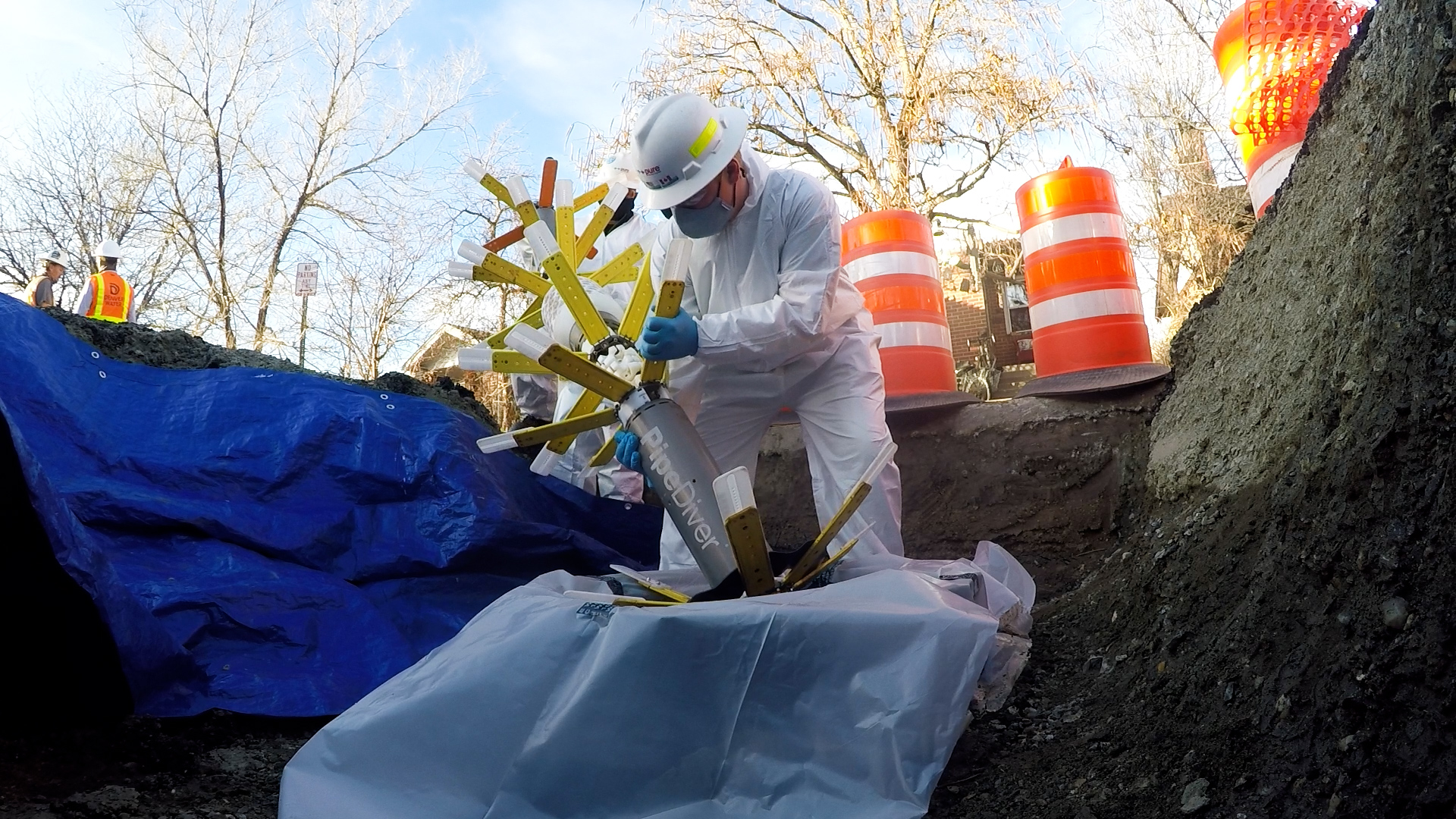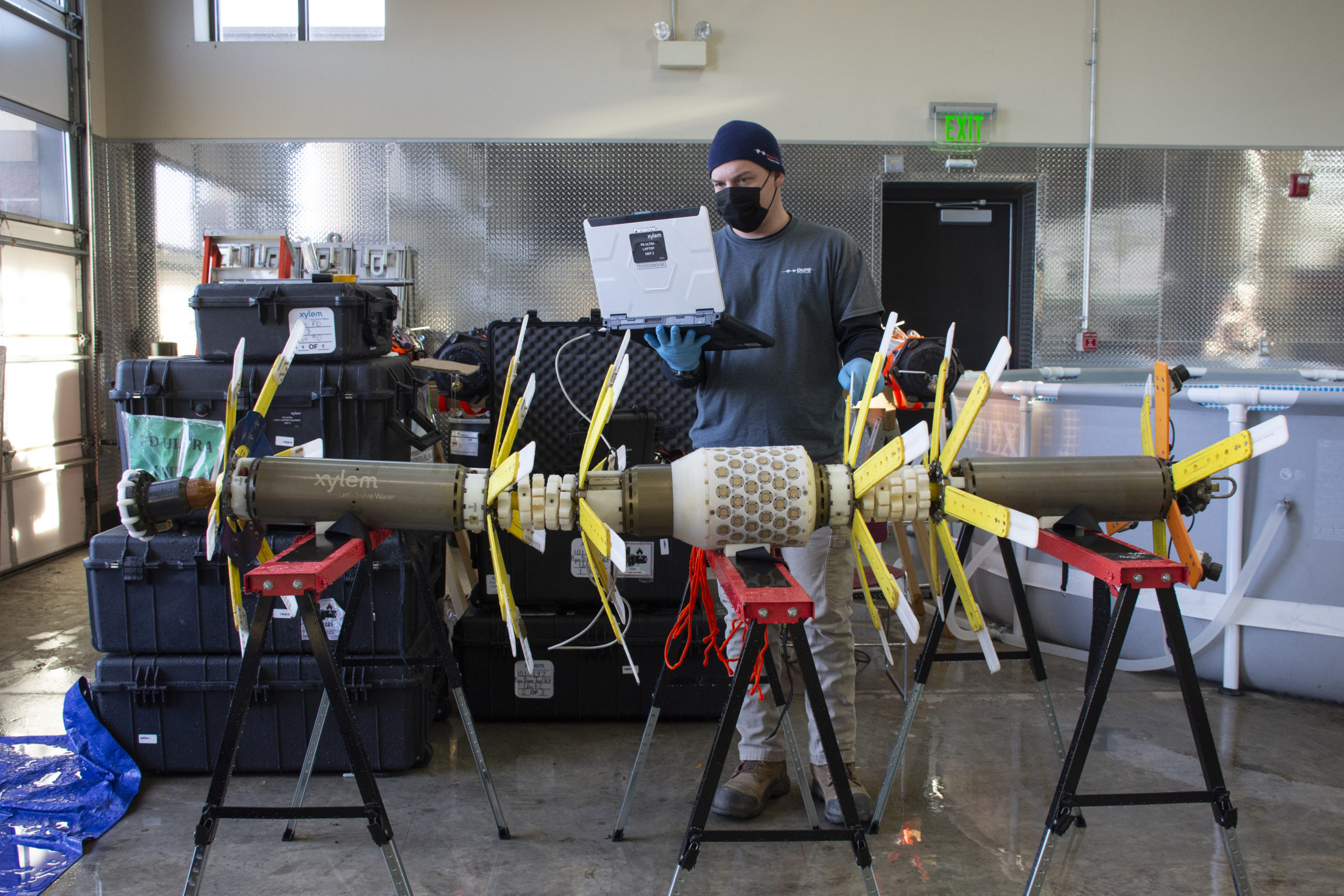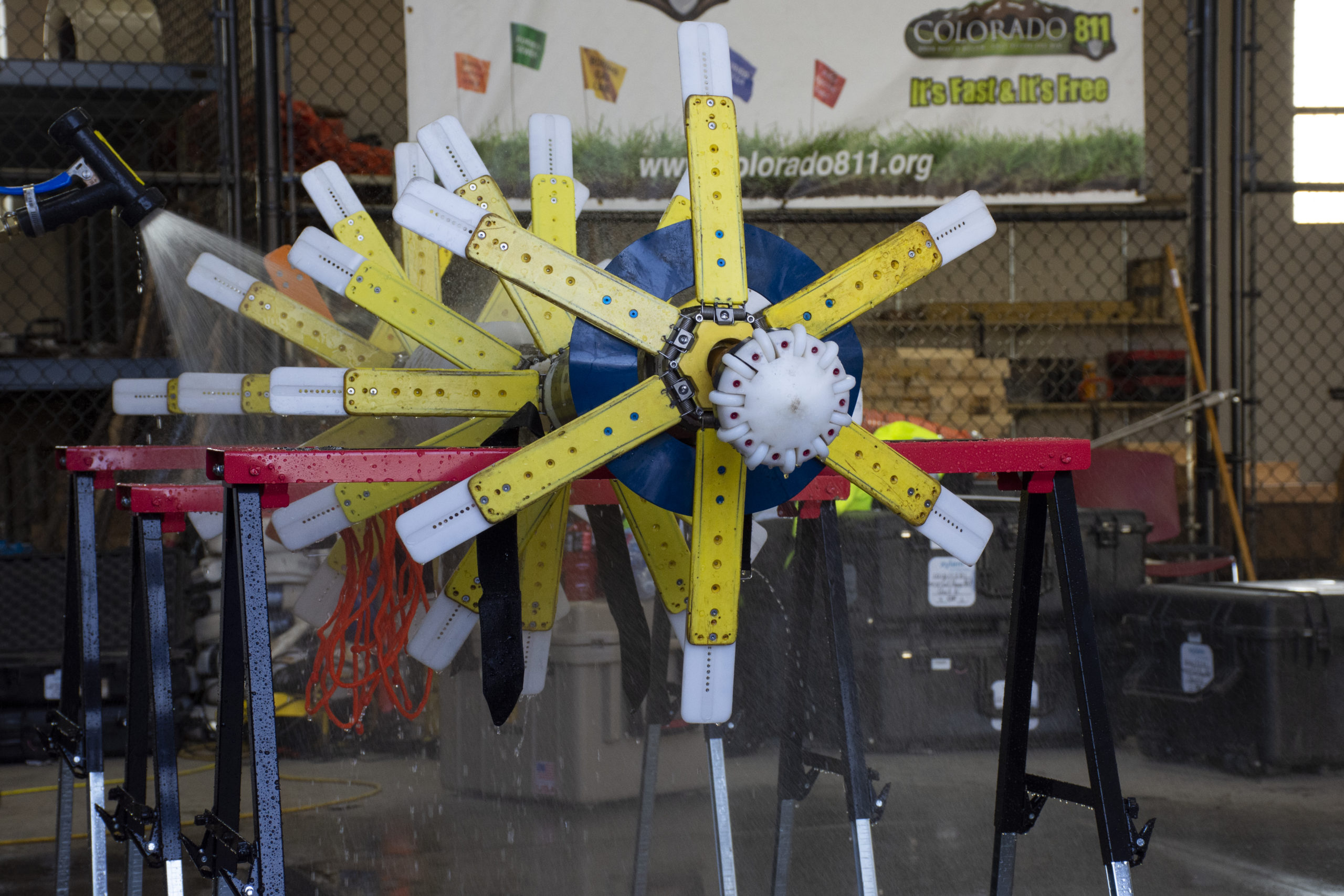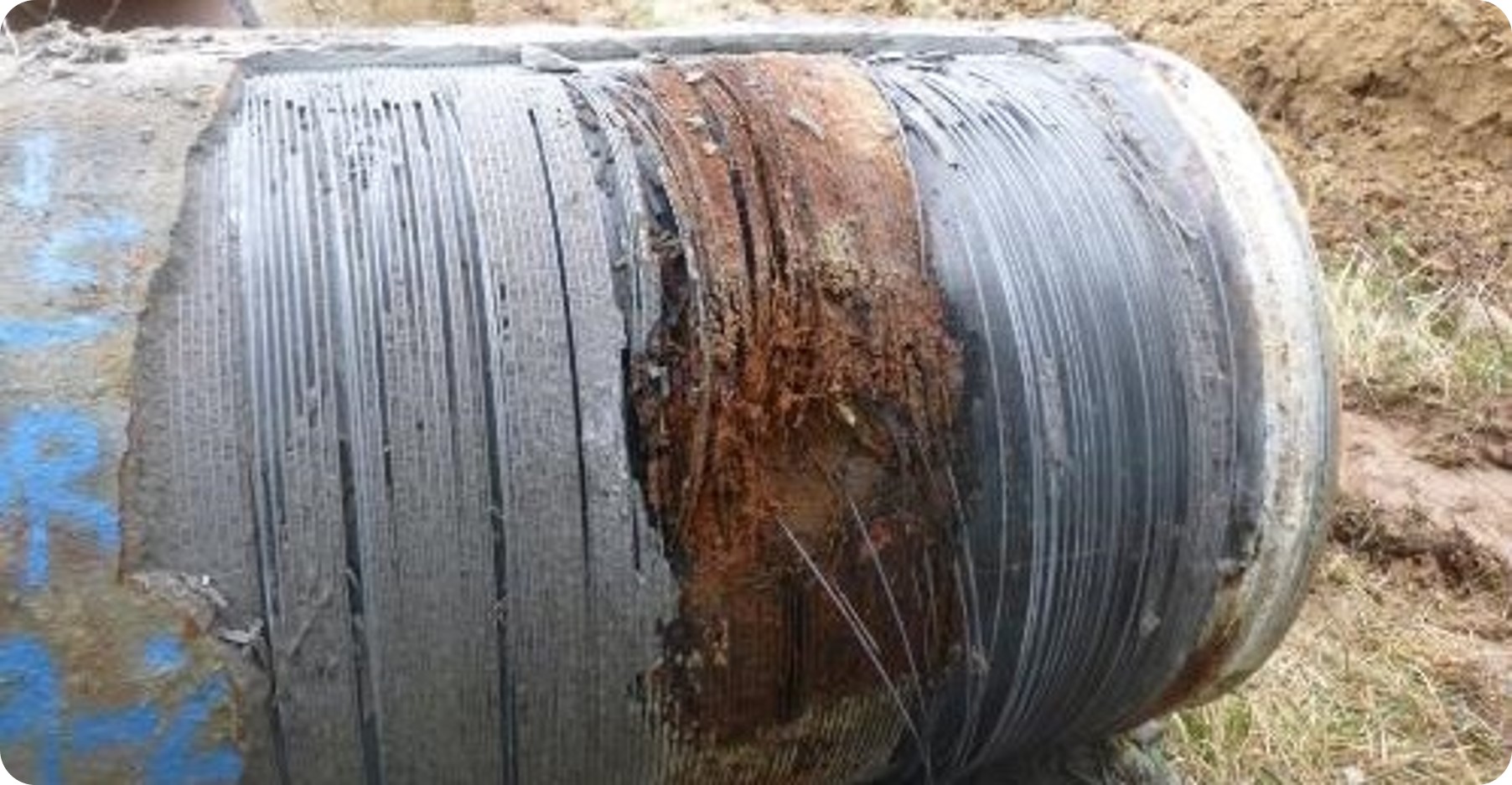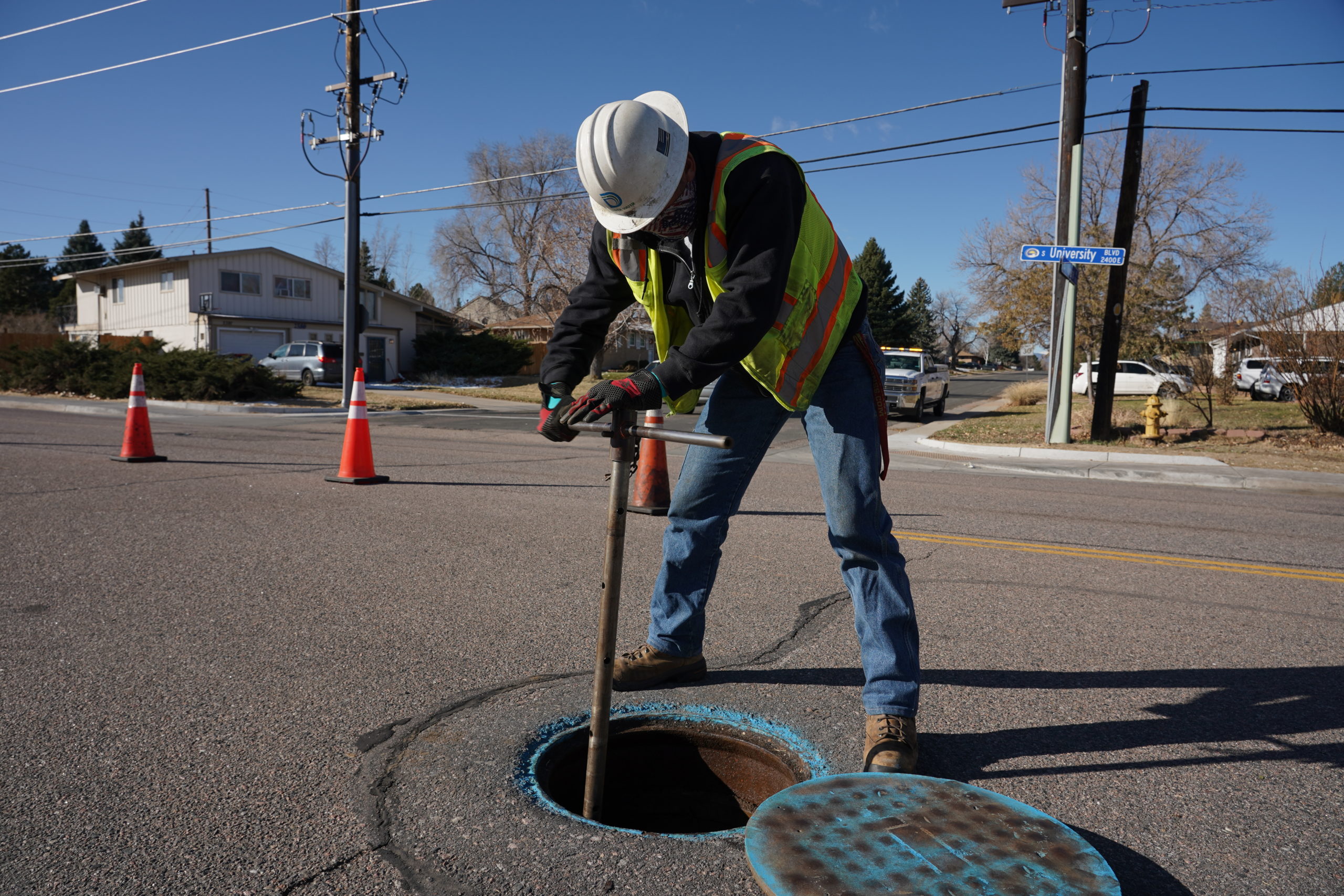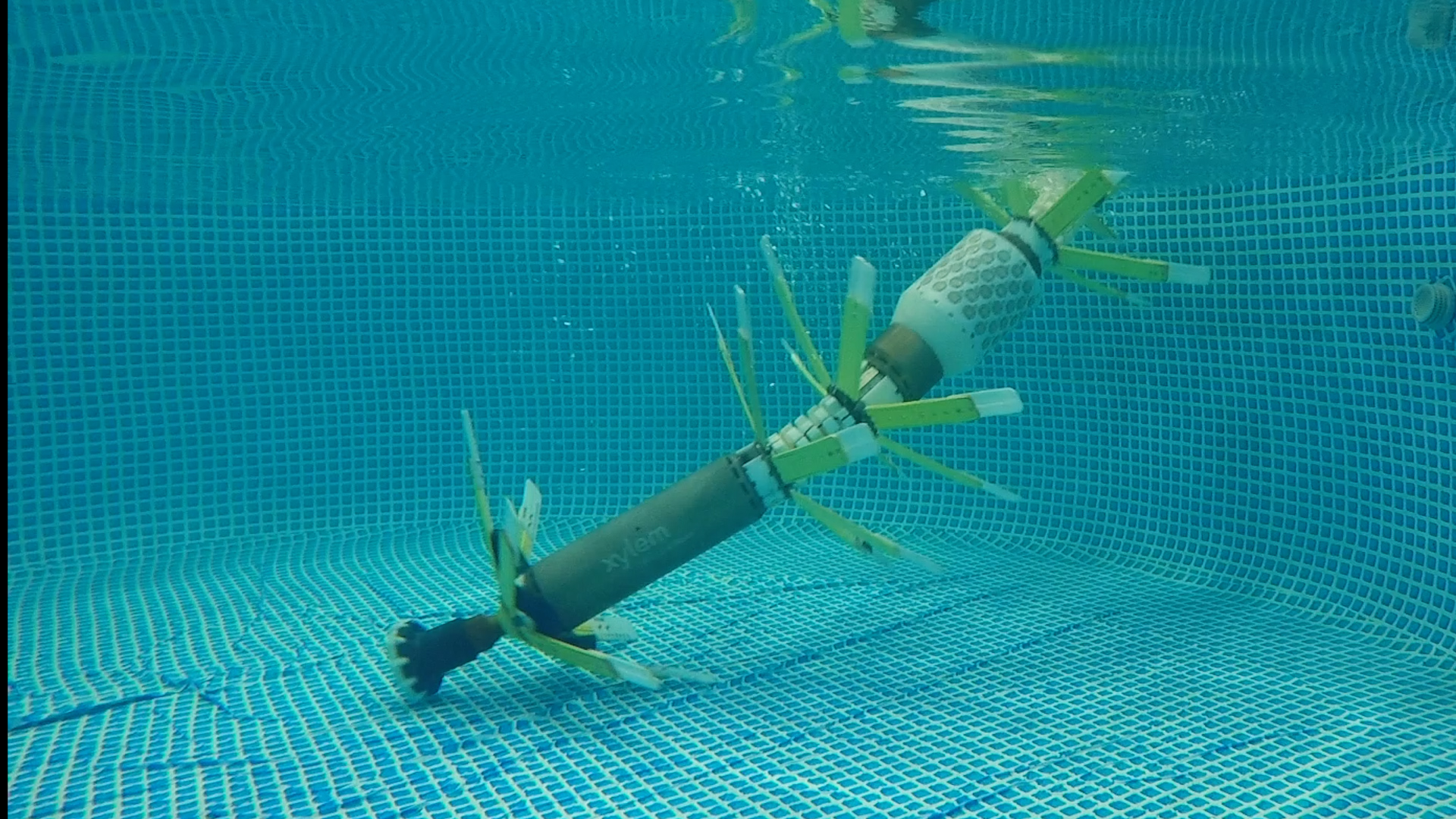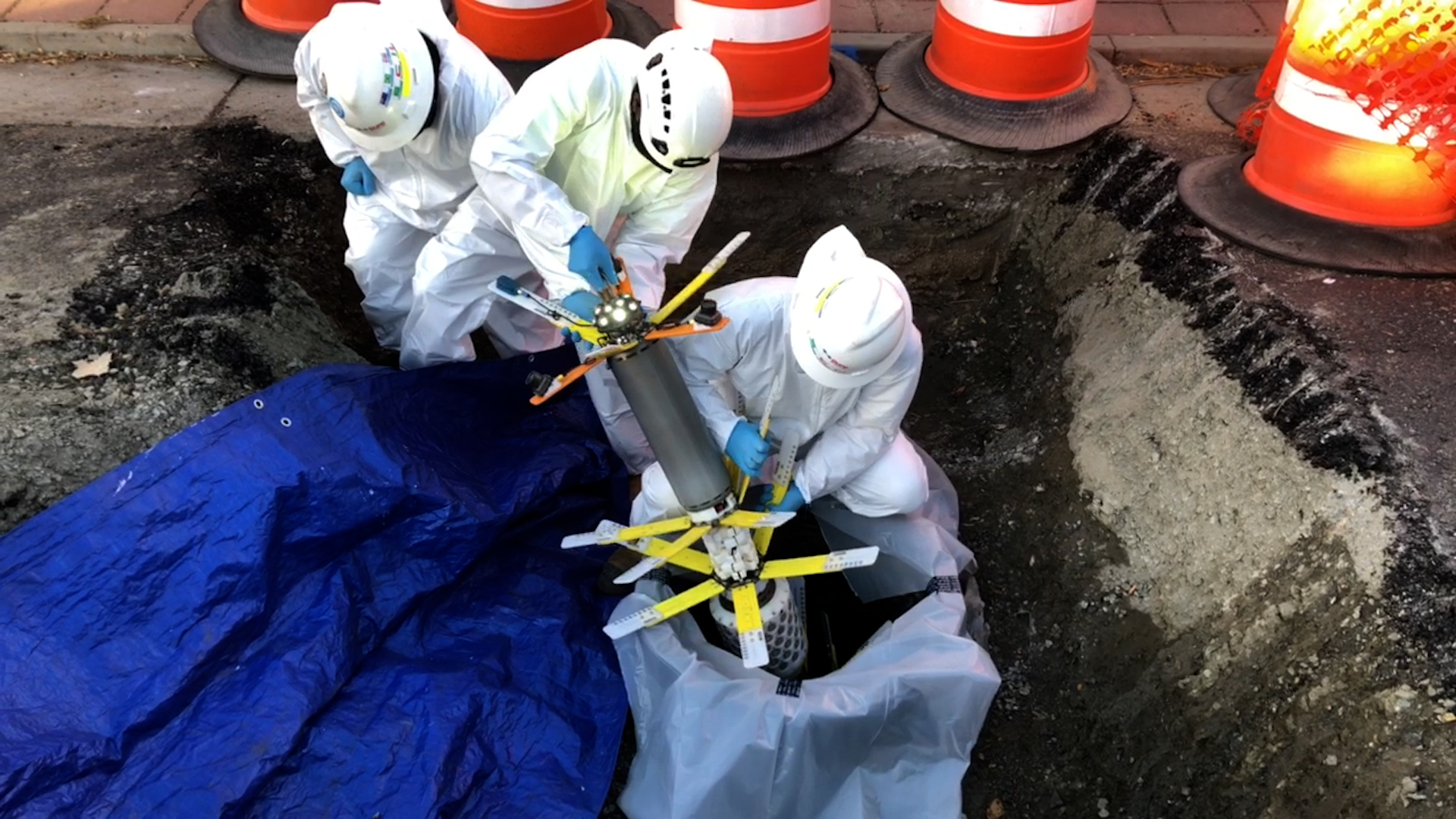
Diving in to inspect pipes from the inside out
How do you inspect a water pipeline buried several feet underground and far too small to safely walk through?
In some cases, you send in a tool specifically designed to go with the flow and collect data along the way.
In the fall of 2020, Denver Water tested a somewhat unusual looking, high-tech device called a PipeDiver to inspect several miles of buried pipeline.
The PipeDiver is a state-of-the-art piece of equipment operated by Pure Technologies, a division of Xylem Inc., a company that specializes in pipeline monitoring and assessments for clients around the world. The company has been using the tool for inspections since 2010.
“We have about 3,000 miles of pipes in the metro area and we take a proactive approach toward monitoring their condition,” said Devin Shable, an engineer at Denver Water. “We have several methods to inspect our pipelines, but this was our first time using the PipeDiver.”
Denver Water used the PipeDiver to inspect two pipelines, a 3.7- mile stretch of pipe in Centennial that runs under open space, University Boulevard, East Dry Creek Road and Colorado Boulevard. The other inspection was on a 2-mile stretch of pipe under West Alameda Avenue and West Bayaud Street in Denver’s Baker and Valverde neighborhoods. The pipelines range in size from 30 to 36 inches in diameter.
Over time, pipelines can deteriorate, leading to leaks and ruptures. Many sources of stress from inside and outside the pipe can take a toll on a pipeline’s condition. These sources include soil type, how the soil interacts with the pipe, age, pipe material and how the pipe was constructed.
“Based on problems we’ve had on other pipelines of similar age and conditions, we wanted to do a thorough assessment of these two pipelines to see if there are any issues,” Shable said. “Proactive inspections are a critical part of our operations to prevent pipe breaks.”
Shable said buried pipelines are challenging to inspect for many reasons.
First off, exterior inspections of pipelines would be costly and very disruptive to the community, as they would require large excavations to expose long exterior sections of pipe for inspection.
As for inspecting a pipe from the inside, some pipes are too small for a person to walk through. Even if a pipe is large enough, there are many safety and logistical challenges to overcome before allowing someone to perform an internal “manned” inspection.
Another challenge is that traditional “manned” inspections require draining a pipe, which can lead to lengthy disruptions in water service to customers.
The PipeDiver solves many of these issues.
“One of the biggest benefits of the PipeDiver is that we can leave a pipeline in service while we do the condition assessment,” said Brian Hext, project manager for Pure Technologies. “This tool can be more convenient for water utilities.”
But using the PipeDiver to inspect a buried pipeline still requires extensive planning, coordination and proper execution.
“Each time we do an inspection, we have to custom build the PipeDiver for the specific type and size of the pipe,” Hext said. “For Denver Water, we used two different PipeDivers for the two pipelines.”
The PipeDivers used for the Denver Water inspections look like 10-foot-long, mini-submarines made of several tube-like canisters that contain the electronics systems.
The articulated sections of the PipeDiver allow it to bend around sharp turns in the pipeline, much like the joint at the middle of a “bendy bus” allows it to weave through city streets.
On the front of the PipeDiver is a special nose that helps guide it through valves inside the pipeline. About 24 flexible, flower-like plastic petals stick out of each section to keep the device centered in the pipe as it moves along.
One of the PipeDivers used in Denver Water’s inspections was equipped with high-definition cameras on the tail to capture images inside the pipe.
“We like to joke that it looks a little bit like a prehistoric fish,” Hext said. “It does not have a motor and simply uses the flow of the water to move through the pipe.”
Crews must carefully assemble, test, balance and disinfect the device before each inspection.
Maintaining safe water quality is critical during the inspection process. In addition to an extensive cleaning and disinfection process for the PipeDiver, Denver Water had a water quality operations expert on hand to run tests during the inspection to ensure the utilities’ safe drinking water standards were not impacted by the inspection.
Once the PipeDiver is put together, the Pure Technologies team inserts it into an access point in the pipeline. The devices are equipped with GPS technology so crews can keep track of them as they float through the pipe.
After the PipeDiver completes its route, crews use custom-designed nets to catch the device and pull it out of the pipe.
To inspect pipes made of metal, such as cast iron, the PipeDivers are fitted with ultrasonic technology while electromagnetic technology is used to inspect pipes made of concrete.
“What we’re looking for with the concrete pipe are the wires wrapped around the pipe that help hold it together,” Hext said. “If those wires break, it can cause the pipe to burst.”
The ultrasonic technology used for metallic pipes measures the thickness of the pipe and areas of corrosion.
“If we find a place where the thickness is less than what it should be, we pinpoint that location as a potential issue,” he said.
“As with any new inspection technique, there was a learning curve that we had to work through to complete the inspection with the PipeDiver tool,” Shable said.
Denver Water crews worked with the Pure Technologies team to open all the valves in the pipeline, to give the PipeDiver a clear path through the pipe sections it was inspecting. Another challenge involved adjusting the flow of water through the pipes to ensure the PipeDiver moved at the optimal speed for data collection.
Following the inspection, Pure Technologies will analyze the data from the inspections and then send reports with the findings to Denver Water.
“The inspection went well and the PipeDiver did its job,” said Luke Switzer, field team leader with Pure Technologies. “We should be able to get some good data to help Denver Water make informed decisions down the road.”
In addition to using the PipeDiver, Denver Water’s proactive approach to assessing pipelines includes “manned” inspection techniques and real-time pipeline monitoring equipment.
Manned inspections require draining the water from the pipeline to allow for an inspector to walk through and assess the pipe.
Real-time monitoring equipment, used on some sections of important pipelines, includes the use of acoustic fiber optic monitoring systems (read a TAP story about that technology here) and equipment designed to detect pressure changes and leaks.
Data from inspections also helps in the planning process of prioritizing when pipes should be replaced. This is important because replacing large water pipelines is expensive. For example, a project to replace 2,205 feet of pipeline in north Denver in 2020 cost nearly $4 million dollars.
Denver Water uses inspection data as well as other factors including number of leaks, breaks, maintenance projects and outages to collect a full picture of a pipelines’ overall health.
Once all the information is compiled, the utility decides if small “targeted” repairs are needed or if certain sections need to be repaired to maintain a desired level of pipeline reliability.
If those options are not deemed to be cost effective, then full replacement of the entire pipeline may be needed.
“Having a good understanding of the condition of the pipe allows us to make decisions about the timing of replacement and allows us to push expensive projects out into the future,” Shable said. “The inspections help inform our decisions on what we need to address today and what we need to plan for down the road.”


